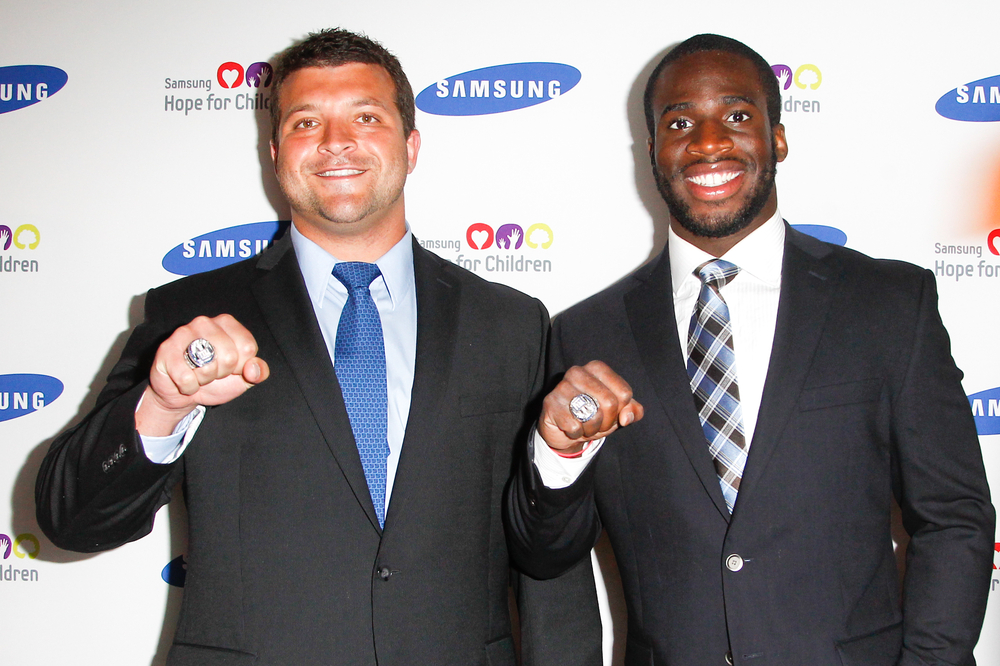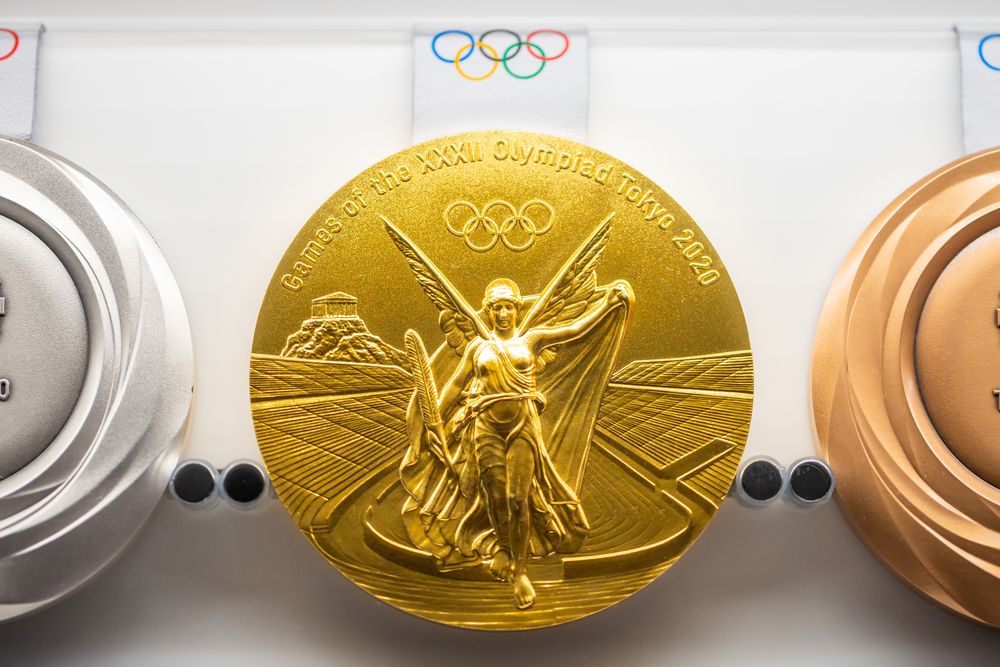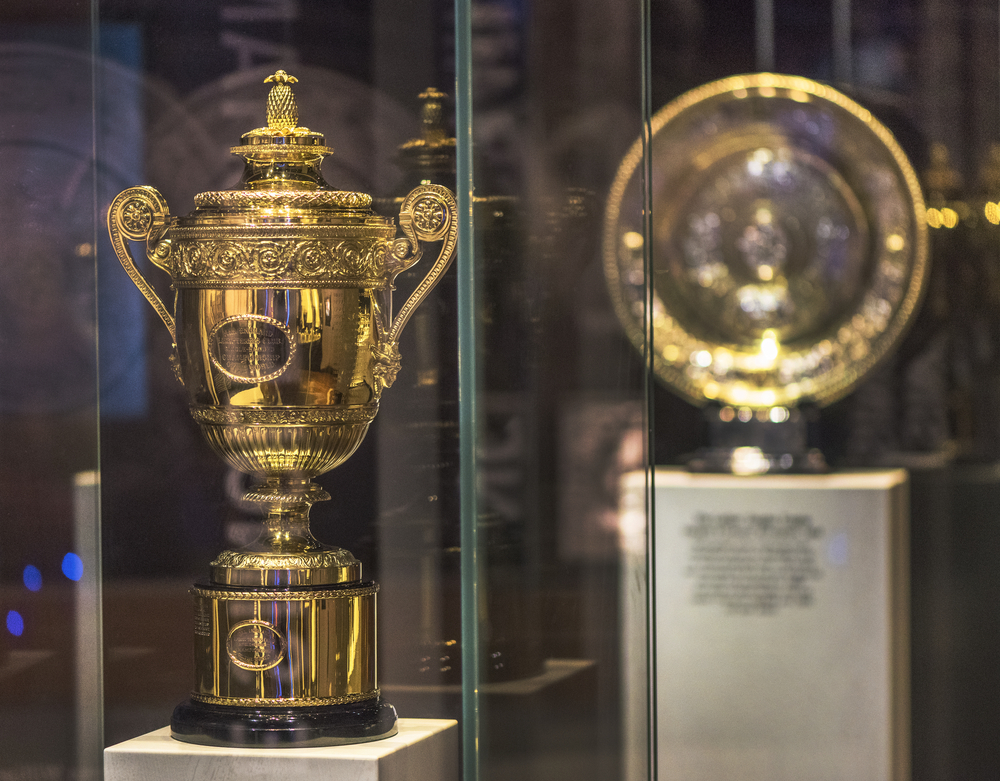11 Famous Sports Items That Became Icons of Popular Culture
Sports have always played a significant role in shaping popular culture, with certain items transcending their athletic origins to become symbols of success, style, and identity. From iconic sneakers to legendary trophies, these sports items have captured the public’s imagination and become ingrained in fashion, media, and everyday life. They represent much more than just sporting achievements; they embody values like determination, excellence, and passion, resonating with people from all walks of life. These items continue to influence trends, making their mark in both the world of sports and beyond.
This post may contain affiliate links, which helps keep this content free. Please read our disclosure for more info.
Air Jordan Sneaker Line

The Air Jordan sneaker line, launched in 1985, quickly became more than just a basketball shoe. Created in partnership with NBA legend Michael Jordan, the brand revolutionized the sneaker industry, blending athletic performance with high-fashion appeal. Initially banned by the NBA due to its bold design and lack of white, Air Jordans gained instant notoriety when Jordan continued to wear them, leading to the NBA’s iconic fine and the sneaker’s rise to stardom. This rebellious streak, combined with Jordan’s unparalleled career, cemented the shoes as a symbol of both athletic greatness and cultural defiance.
Over time, Air Jordans evolved into a must-have fashion item far beyond the basketball court. The shoes became a symbol of status and success, embraced by urban youth, athletes, and collectors alike. The sleek, unique designs and the “Jumpman” logo quickly became synonymous with style, with various iterations constantly pushing the boundaries of both sports performance and fashion. Today, the Air Jordan line continues to be a cultural icon, representing a fusion of sport, style, and identity.
Sports Cap

The sports cap, originally designed for athletes to shield their faces from the sun, has become a key component of global fashion. With its origins in baseball, the cap has evolved into a symbol of team loyalty and a stylish, everyday accessory. Fans began wearing caps to show support for their favorite teams, and soon, the cap transcended its sports roots to become a mainstream fashion item. Now, caps feature logos from a variety of sports teams, sports brands, and even fashion designers, often representing more than just team allegiance; they carry cultural significance.
In modern society, the cap has been embraced by diverse groups, from urban youth to high-fashion runways, making it an enduring piece of popular culture. Its adaptability to different styles and its association with youth culture have made it an accessible fashion statement. From hip-hop artists to athletes to casual wearers, the sports cap serves as a timeless symbol of individuality, pride, and fashion versatility.
Nike’s Association with Athletes

Nike’s strategic partnerships with legendary athletes have played a major role in making the brand a symbol of excellence across various industries. Through their collaborations with superstars like Michael Jordan, Serena Williams, and LeBron James, Nike has solidified its place as a brand that represents athletic achievement, ambition, and cultural influence. Nike has carefully crafted its identity around these athletes, showcasing their talent and resilience, which not only boosts the brand’s credibility but also taps into the aspirational lifestyle of millions.
Nike’s partnership with Michael Jordan, for example, created not just a product line but a cultural movement. The iconic “swoosh” logo, paired with these athletes’ successes, has become synonymous with greatness and perseverance. Nike’s ability to transcend sports and resonate deeply within global popular culture has made it more than just an athletic brand; it’s a symbol of overcoming obstacles, pushing boundaries, and striving for success.
The Stanley Cup

The Stanley Cup, awarded annually to the champion of the National Hockey League (NHL), has a unique place in sports culture. Beyond being a prestigious trophy, the Stanley Cup has come to symbolize the ultimate achievement in professional hockey, a mark of excellence that transcends the sport itself. Its history, dating back to 1893, has infused it with legendary tales of competition, triumph, and heartbreak. The ritual of players drinking from the cup, hoisting it high, and sharing it with their fans adds to its mystique, turning it into a powerful symbol of sport and celebration.
The Stanley Cup’s significance extends beyond the rink, having found a place in global culture. Its shape and tradition have become iconic, with the trophy appearing in movies, advertisements, and popular media. The Cup’s connection to athletes’ hard work, dedication, and community spirit has made it a recognized symbol of both athletic accomplishment and the deep connection between athletes and their fans.
Wimbledon Tennis Whites

Wimbledon, the world’s most famous tennis tournament, has maintained a long-standing tradition of requiring players to wear all-white clothing. This distinctive uniform has become an iconic part of the event’s identity, representing both a nod to the sport’s heritage and the prestigious nature of the tournament. The requirement for tennis whites has grown into a symbol of Wimbledon itself, creating a sense of timelessness and exclusivity that separates the event from others in the sporting world. Over the years, the iconic whites have evolved into a fashion statement in their own right, influencing both athletic wear and high-end fashion.
Off the court, Wimbledon’s tennis whites have been embraced by designers, and the tradition has sparked conversation about style, sportsmanship, and professionalism. These clothes are now associated not just with the sport of tennis but with a refined lifestyle, making their way into fashion collections and even everyday streetwear. This blend of sport and style has made Wimbledon’s all-white attire a lasting symbol of tennis culture and elegance.
Super Bowl Ring

The Super Bowl ring is a symbol of the pinnacle of achievement in American football, awarded to players, coaches, and staff after their team wins the NFL’s championship game. Beyond being a symbol of victory, these rings have come to represent the relentless drive and dedication it takes to reach the highest level of professional sports. The Super Bowl ring itself is a coveted prize, crafted with diamonds and precious metals, making it a tangible reminder of the intense competition and success. These rings have become part of American sports folklore, with each one telling its own story of the team’s path to glory.
In popular culture, the Super Bowl ring has transcended sports, becoming an aspirational symbol of success and wealth. Many celebrities and high-profile individuals who have never played in the NFL wear replicas of these rings, using them as a symbol of their achievements or as a statement of status. The Super Bowl ring has become a piece of Americana, a recognized symbol of triumph that connects fans, players, and pop culture enthusiasts alike.
The Tour de France Yellow Jersey

The yellow jersey, worn by the leader of the Tour de France, has become an iconic symbol in the world of cycling. First introduced in 1919, the yellow jersey has transcended its role as a mere ranking marker, becoming a symbol of excellence, endurance, and perseverance. Each year, the cyclist who wears the yellow jersey is celebrated as the best of the best, and the race itself is watched by millions, with the jersey at the forefront of the spectacle. It signifies not just athletic ability but also mental toughness, as the race is grueling and the competition fierce.
Off the cycling circuit, the yellow jersey has entered into wider popular culture, symbolizing the pursuit of personal goals, hard work, and overcoming challenges. It’s a visible representation of peak achievement, transcending the sport to become a metaphor for overcoming obstacles and striving for greatness. The yellow jersey remains a powerful icon within both the sports world and mainstream culture.
Olympic Gold Medal

The Olympic gold medal is one of the most prestigious awards in the world, representing the absolute pinnacle of success in sport. First awarded at the inaugural modern Olympics in 1896, it has come to symbolize not just athletic excellence, but also national pride, personal sacrifice, and the achievement of the impossible. To win an Olympic gold medal is to be recognized as the best in the world, an honor that has a powerful emotional and cultural impact far beyond the sporting world. Athletes who win gold become global icons, celebrated for their skill, discipline, and determination.
Culturally, the Olympic gold medal has become a universal symbol of achievement and hard work, with its image frequently used in popular media to represent success in any field. Whether worn by athletes at the peak of their careers or displayed in advertisements and movies, the medal evokes the ideas of reaching the top and surpassing all challenges. It stands as an enduring symbol of victory, motivation, and the human spirit’s ability to overcome.
The FIFA World Cup Trophy

The FIFA World Cup trophy, awarded every four years to the best soccer team in the world, is one of the most prestigious and recognizable awards in sports. First awarded in 1930, it has come to symbolize global excellence in the most popular sport worldwide. The trophy itself, designed to resemble two human figures holding the globe, captures the essence of soccer’s universal appeal and global impact. It’s not just a trophy; it’s a dream for players and a symbol of unity for fans worldwide.
Beyond the soccer field, the World Cup trophy has permeated popular culture, appearing in films, advertisements, and celebrations. It represents more than just a sporting achievement; it is an international symbol of pride, dedication, and the ability to bring nations together through sport. Millions around the globe watch the World Cup, and the trophy itself stands as a symbol of the unifying power of soccer and sports in general.
The Red Sox’s Fenway Park Green Monster

The “Green Monster” is one of the most iconic features of Fenway Park, home of the Boston Red Sox. This towering left-field fence, standing at 37 feet tall, has been part of Fenway’s history since the park’s opening in 1912. Its distinct green color and the challenges it poses to hitters have made it one of the most recognized features in sports. Over the years, the Green Monster has transcended its role in baseball to become a symbol of the Red Sox and Boston’s gritty, resilient identity.
In popular culture, the Green Monster has come to represent more than just a physical boundary in baseball. It symbolizes the city’s undying passion for its sports teams, particularly the Red Sox, and the connection between the fans and the ballpark. The wall has been featured in countless films, documentaries, and sports memorabilia, further solidifying its place in the collective cultural imagination as a landmark of sports history.
The Wimbledon Trophy

The Wimbledon trophy is more than just a prestigious tennis award; it’s a symbol of excellence and tradition in the world of sports. Since 1877, it has been awarded to the champion of Wimbledon, one of the oldest and most prestigious tennis tournaments in the world. The trophy, with its classic silver design and intricate detailing, has become a global symbol of success, representing the highest achievement in tennis. Winning it is a lifelong dream for many athletes, and the tournament’s longstanding history adds a layer of respect and reverence to the award.
Beyond the tennis world, the Wimbledon trophy has become a symbol of class and tradition, with the event’s all-white dress code and rich history setting it apart from other major sports events. It has appeared in movies, advertisements, and fashion, further solidifying its role as a symbol of not just sporting achievement, but also of the elegance and prestige that accompany it. The trophy continues to inspire athletes and fans alike, standing as a beacon of excellence in the sport.
This article originally appeared on Avocadu.
